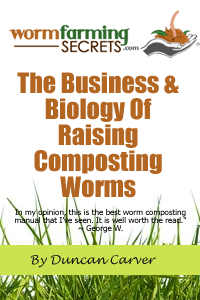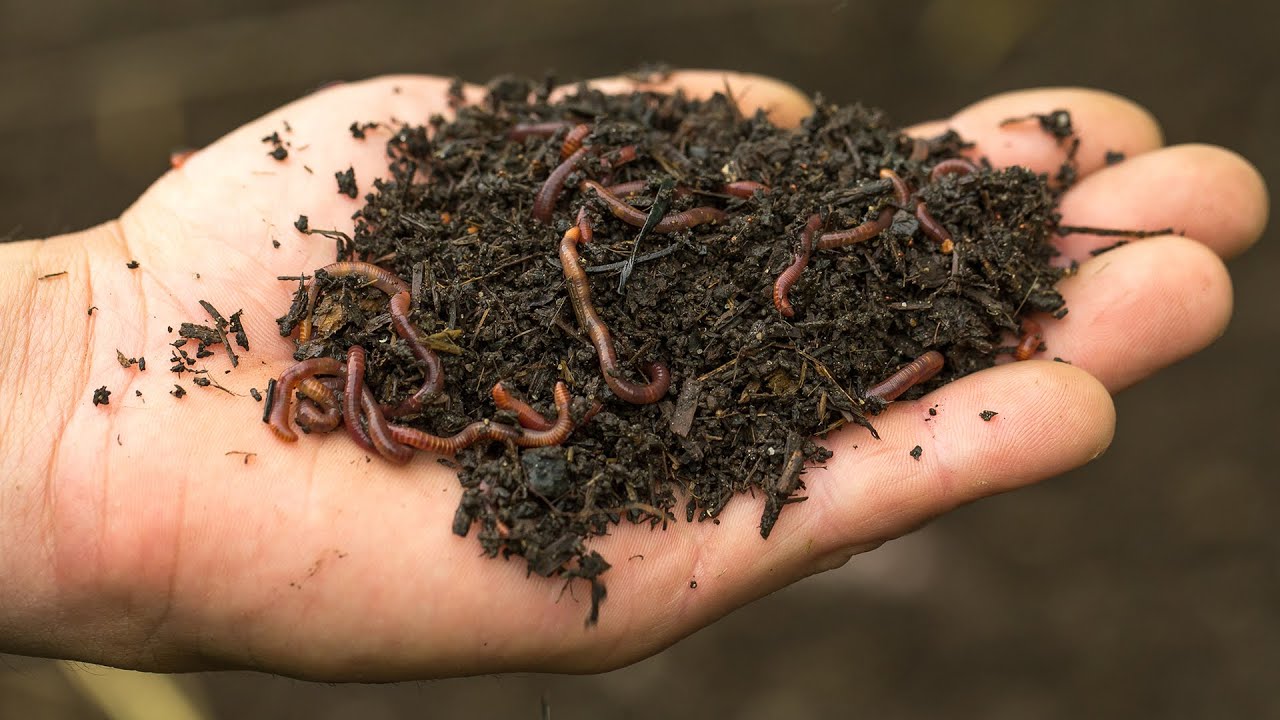“I’ve got a worm composting setup in my backyard, but I’m a bit stumped when it comes to separating the worms from the finished compost. I’m worried about harming the worms and want to make sure I’m doing it right. Can you help me out with some detailed steps and advice on the best methods? Also, any tips on why some methods might be better in different situations are appreciated!” thanks, Amanda, Portland, USA.
How Do I Separate Worms From The Finished Compost?
Hey Amanda, you’ve got a great question there! It’s fantastic that you’re diving into worm composting – it’s a wonderful way to recycle kitchen scraps and garden waste while creating rich compost for your plants. Let’s go through various techniques to separate those hardworking worms from their finished compost without causing them any stress. Plus, we’ll discuss why certain methods might work better depending on your situation.
Light Separation Method
This method is pretty straightforward and leverages the worms’ natural aversion to light. It’s effective and can be fun if you enjoy getting hands-on with your compost.
Follow these steps:
- Spread the compost: On a tarp or old sheet, empty the contents of your compost bin into several small piles.
- Shine a light: Either natural sunlight or a bright lamp will work. The worms will migrate downward to escape the light.
- Harvest the compost: After about 10-20 minutes, the top layer of each pile will be relatively worm-free. Scrape it off and set it aside.
- Repeat: Continue this process until you’re left with mostly worms and a bit of compost. Transfer the worms back to their bin with fresh bedding.
This method works great if you have a sunny spot or a dedicated space and enjoy the process of manually separating the worms. It’s gentle on the worms and gives you a high degree of control.
Screening Method
The screening method is a bit more mechanical, but it can be faster, especially if you have a lot of compost to sift through.
Here’s how you can do it:
- Create a screen: You’ll need a frame and a mesh with holes large enough for the compost to fall through but small enough to retain the worms, usually about 1/4 inch.
- Sift the compost: Scoop compost onto the screen and shake it back and forth over a container or tarp. The fine compost falls through, leaving worms and larger debris behind.
- <strongsort and="" transfer: Manually pick out worms from the debris and return them to their bin with fresh bedding.
This method is good if you prefer not to manually handle the worms or if you have a fair amount of finished compost. Consider wearing gloves if you’re dealing with a large quantity to protect your hands.
Migrate and Bait Method
This method uses worms’ attraction to fresh food to encourage them to migrate from the finished compost to a new location. It’s a passive approach and requires a bit of planning.
Steps to follow:
- Prepare fresh bedding: Set up a new bin or a separate compartment in your existing bin with fresh bedding and food.
- Bait the worms: Place the new bedding alongside the old compost. Add a generous amount of kitchen scraps to the new bedding.
- Wait: Over a few days to a week, the worms will naturally migrate to the new bedding in search of food.
- Collect the compost: Once most worms have relocated, you can harvest the worm-free compost from the original bin.
This method works well if you prefer a hands-off approach and don’t mind waiting a bit longer for the process to complete. It’s less labor-intensive and very gentle on the worms.
Divide and Conquer Method
Sometimes called “harvesting towers”, this method involves stacking bins, leveraging worms’ movement towards fresh food and bedding. It’s efficient but requires a specific type of bin system.
Here’s how it works:
- Stacking bins: Set up a tiered system where bins can be stacked. The bottom bin starts as the primary composting area.
- Add fresh bedding: When the bottom bin is full, place a second bin with fresh bedding and food on top. Ensure there are holes allowing worms to move between layers.
- Wait: Over time, worms will migrate toward the food in the upper bin. Once they’ve moved, you can remove the bottom bin to harvest the compost.
- Repeat: Continue stacking additional bins as needed, always ensuring there’s fresh food at the top layer to attract the worms upward.
This method works very well if you have a continuous composting operation and want to streamline the process of harvesting compost regularly. It requires a bit of investment in a multi-bin system but can significantly reduce the effort of manually separating worms.
Using a Worm Harvester
If you’re into gadgets and love efficient solutions, a worm harvester might be right for you. These contraptions are designed specifically for quickly and efficiently separating worms from compost.
Using a worm harvester:
- Load the harvester: Place the compost and worms into the harvester.
- Operate the machine: Turn on or manually operate the harvester, which typically involves a rotating drum or sifting mechanism.
- Collect finished compost: The machine will separate the compost from the worms efficiently, often into separate containers.
- Return the worms: Transfer the worms back to their bin with fresh bedding.
While a worm harvester can be a bit of a splurge, it’s a great investment if you’re serious about worm composting or operate at a larger scale. It’s the least hands-on method and significantly speeds up the harvesting process.
Considerations for Choosing a Method
Amanda, the best method for you will depend on your specific situation. Consider the following:
- Volume of compost: If you have a small volume, the light separation or migrate and bait methods might be more feasible. For larger volumes, screening or using a worm harvester could save time and effort.
- Time and effort: If you enjoy the process and are not in a rush, manual methods like light separation can be satisfying and allow you to closely monitor the health of your worms. For a quicker, less hands-on approach, a worm harvester or screening might be better.
- Costs and equipment: Consider your budget and the equipment you already have or are willing to invest in. Multi-bin systems and worm harvesters can be more expensive but offer efficiency and ease of use.
Remember, gentle handling of the worms is key in any method to ensure their health and productivity. Providing fresh bedding after the separation process helps them quickly settle back into their environment.
Final Thoughts…
Amanda, thanks for reaching out with such a fantastic question! Separating worms from finished compost might seem daunting at first, but with the right approach that suits your volume, budget, and patience level, you can do it effectively and efficiently. Each method has its unique benefits, and finding the one that works best for you will make your composting experience much more enjoyable.
Happy composting, and keep up the great work!



